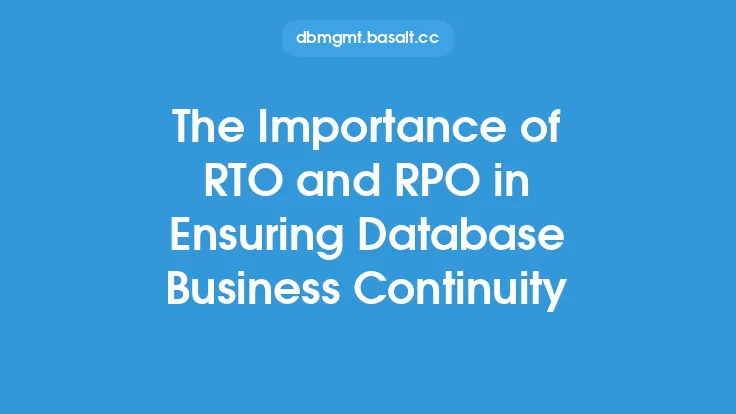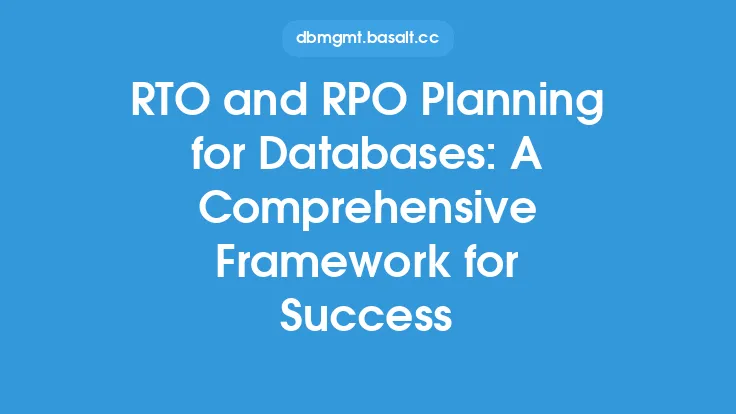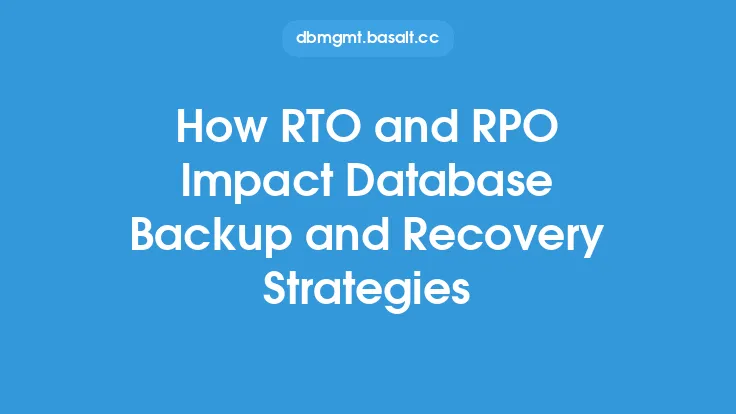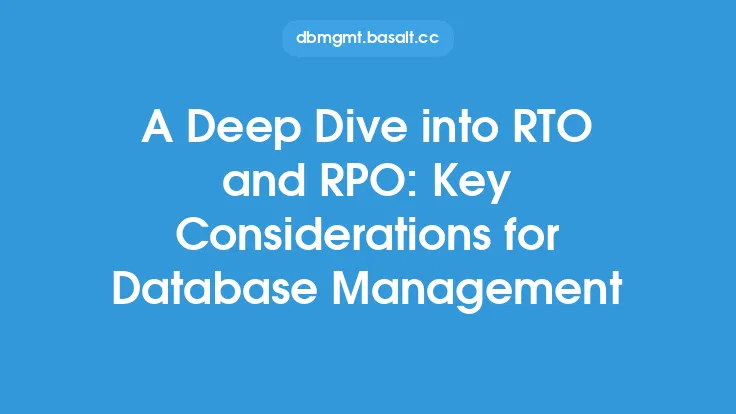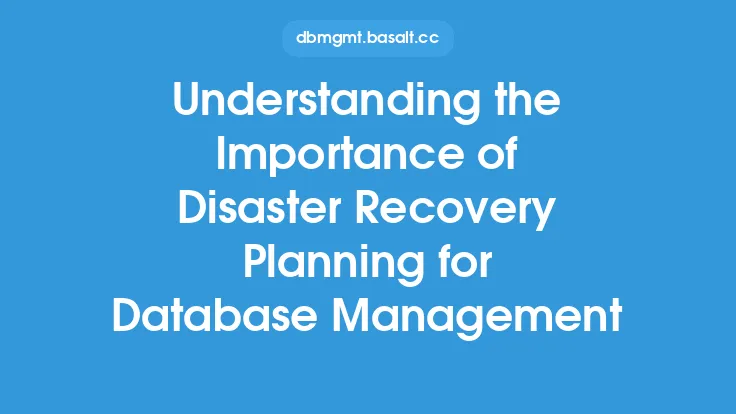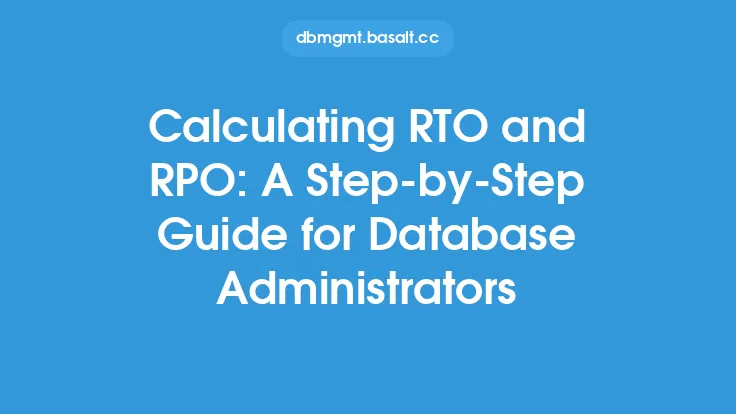When it comes to database backup and recovery, two crucial concepts come into play: Recovery Time Objective (RTO) and Recovery Point Objective (RPO). These two metrics are essential in determining the effectiveness of a database recovery plan and are used to measure the ability of an organization to recover from data loss or system failure. In this article, we will delve into the foundations of RTO and RPO, exploring their definitions, importance, and how they are used in database recovery planning.
Introduction to RTO
Recovery Time Objective (RTO) refers to the maximum amount of time that an organization can tolerate being without access to its data or systems after a disaster or outage. It is the time it takes to restore the database to a functional state, allowing business operations to resume. RTO is typically measured in hours, minutes, or even seconds, depending on the organization's requirements. For example, a company that relies heavily on its database for real-time transactions may have an RTO of 15 minutes, while a company with less time-sensitive data may have an RTO of several hours.
Introduction to RPO
Recovery Point Objective (RPO) refers to the maximum amount of data that an organization can afford to lose in the event of a disaster or outage. It is the point in time to which the database can be restored, ensuring that all data up to that point is recovered. RPO is typically measured in terms of time, such as the last backup or the last transaction. For instance, a company may have an RPO of 1 hour, meaning that it can afford to lose up to 1 hour's worth of data in the event of a disaster.
Relationship Between RTO and RPO
RTO and RPO are closely related, as they both impact the overall recovery process. A shorter RTO requires a more rapid recovery process, which in turn may require more frequent backups or a more robust recovery infrastructure. On the other hand, a shorter RPO requires more frequent backups or a more advanced data protection system to ensure that data is not lost. The relationship between RTO and RPO is critical, as it determines the overall effectiveness of the recovery plan. For example, if an organization has an RTO of 2 hours and an RPO of 1 hour, it means that the database must be restored to a functional state within 2 hours, and all data up to 1 hour before the disaster must be recovered.
Factors Influencing RTO and RPO
Several factors influence the determination of RTO and RPO, including business requirements, regulatory compliance, data criticality, and technical capabilities. Business requirements, such as the need for real-time transactions or the impact of downtime on revenue, play a significant role in determining RTO and RPO. Regulatory compliance, such as data retention and protection requirements, also influences the determination of RTO and RPO. Data criticality, or the importance of the data, is another factor, as more critical data may require a shorter RTO and RPO. Finally, technical capabilities, such as the availability of backup and recovery infrastructure, impact the determination of RTO and RPO.
Database Recovery Planning
Database recovery planning involves developing a comprehensive plan to restore the database to a functional state in the event of a disaster or outage. This plan should include procedures for backup and recovery, data protection, and system restoration. The plan should also take into account the RTO and RPO, ensuring that the recovery process meets the required timeframes. A well-designed database recovery plan should include regular backups, data replication, and a robust recovery infrastructure to ensure that data is protected and can be recovered quickly.
Technical Considerations
From a technical perspective, RTO and RPO are influenced by several factors, including backup frequency, data replication, and recovery infrastructure. Backup frequency, or how often backups are performed, impacts the RPO, as more frequent backups result in a shorter RPO. Data replication, or the process of duplicating data in real-time, can also impact RPO, as it ensures that data is available even in the event of a disaster. Recovery infrastructure, such as the availability of servers, storage, and network resources, impacts the RTO, as it determines how quickly the database can be restored.
Conclusion
In conclusion, RTO and RPO are critical components of database recovery planning, as they determine the effectiveness of the recovery process. Understanding the relationship between RTO and RPO, as well as the factors that influence their determination, is essential for developing a comprehensive database recovery plan. By considering business requirements, regulatory compliance, data criticality, and technical capabilities, organizations can determine the optimal RTO and RPO for their database, ensuring that data is protected and can be recovered quickly in the event of a disaster or outage.
